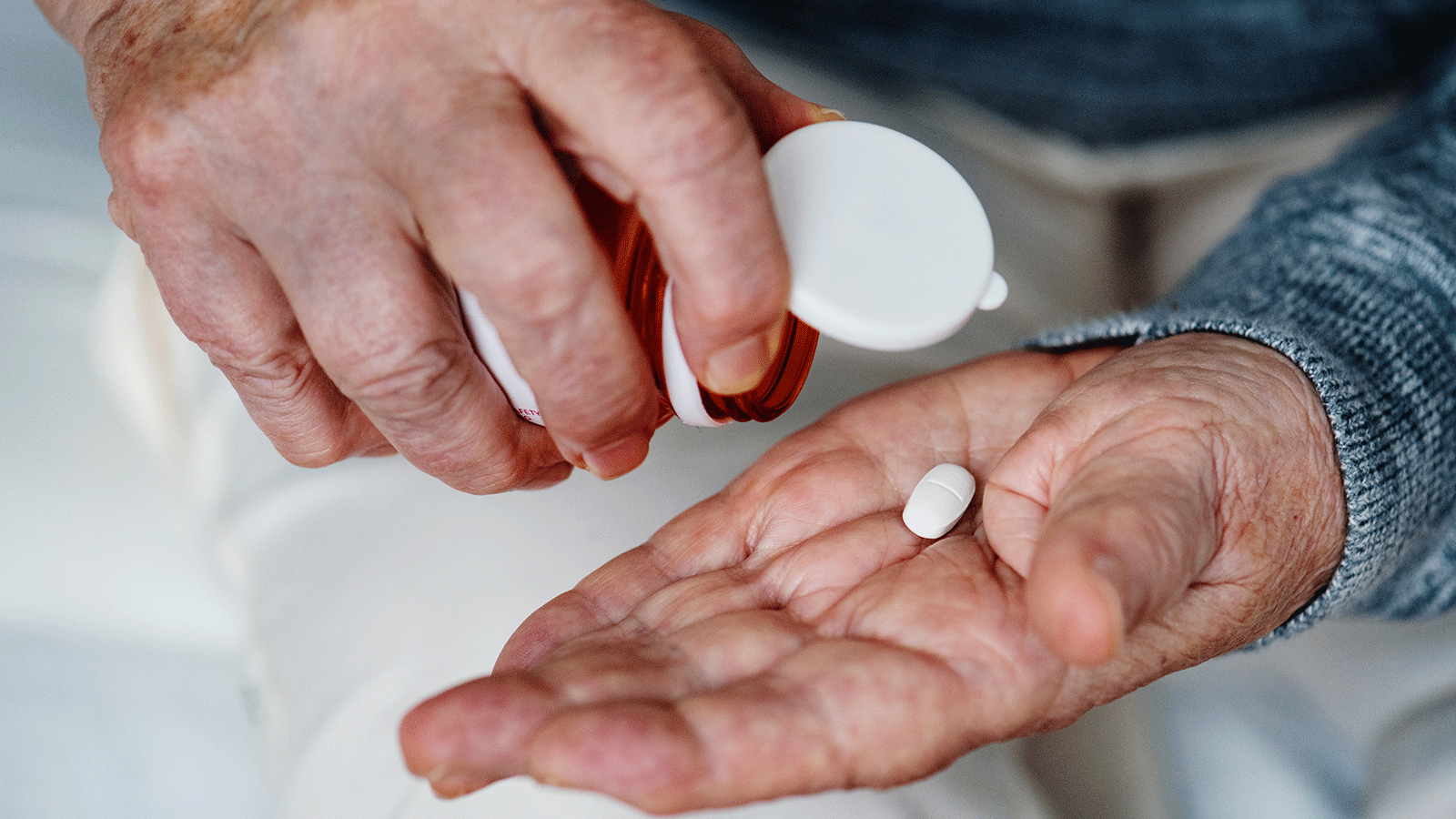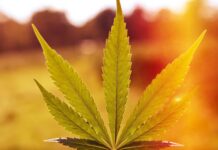
Nikki DeVilbiss of Farmington, New Mexico, experienced the onset of epilepsy after she was propelled through the windshield of a vehicle in a head-on collision in 2010.
A bleeding brain and grand mal seizures followed the wreck, and doctors prescribed her phenobarbital, Lamictal, and Ativan.
“It just comatosed me,” said DeVilbiss, 37. “I couldn’t drive, I couldn’t function, I gained a lot of weight. It put me through heavy, heavy depression.”
About a year after the wreck, DeVilbiss heard medical marijuana was effective for treating seizures, and she eventually found a physician in Farmington and obtained a prescription to start smoking cannabis in 2012. She said she went from two to three seizures per day to maybe four a month.
“I had 85 percent seizure reduction within a couple months,” she told Weedmaps News. “I was able to regain my life back.”
DeVilbiss began to drive again, she dropped the excess weight and stopped using most of the pharmaceuticals. She is only on Keppra and smokes marijuana daily.
“It took care of everything,” she said. “I haven’t been hospitalized over a seizure in years.”
A new report shows medical-only users like DeVilbiss appear to use marijuana for evidence-based medical reasons and have lower prevalence of substance-use disorder than recreational marijuana users.
The report, “Use of marijuana exclusively for medical purposes,” published Feb. 1, 2019, in the Elsevier journal Drug and Alcohol Dependence, uses data from the National Epidemiological Survey on Alcohol and Related Conditions III, which is an in-person interview of 36,309 adults conducted from 2012 to 2013.
The report showed medical-only users had a “distinctly higher prevalence” of medical conditions for which there is some empirical support for marijuana treatment. The report also shows those using marijuana only for medical treatment were much less likely to exhibit anxiety, alcoholism, or non-medical prescription opioid-use disorders.
“Medical-only users appear to use it for evidence-based medical reasons and have lower prevalence of substance use disorder than other marijuana users,” the report concludes. “Nonetheless, because most medical marijuana users also use non-medically, screening for psychiatric disorders and prevention efforts for cannabis use disorder should be implemented when authorizing medical marijuana.”
An Opioid Alternative
Heather Manus, a registered nurse and co-founder of the Cannabis Nurses Network, sees reducing opioid use as one of the biggest benefits for medical marijuana users.
Manus was a home health nurse in New Mexico who worked with numerous hospice patients when medical marijuana was legalized in the state in 2007.
“What we saw when patients were starting using cannabis, they were able to reduce their opioids by 50 percent,” Manus said.
Opioids can have numerous side effects, including constipation, nausea, liver damage, respiratory depression, and dependence. Manus had a patient in chronic pain after his back was crushed in an accident. Heavy opioid use meant the patient also suffered the discomfort of constipation, and the threat of respiratory depression required him to be on oxygen.
“One of the things about opioids is it slows down the peristalsis in your intestines, and you’re not able to move your bowels through,” Manus said.
At the time they had no products except flower to give the patient, so Manus crumbled up marijuana and mixed it into his yogurt. He greeted her in tears a few days later when she returned for a visit after giving him his first dose.
“He was able to go in the bathroom by himself,” she said.
The report seems to support findings in previous studies.
Studies Find Reduced Opioid Use
A May 2018 study published in the Journal of the American Medical Association (JAMA)’s Internal Medicine, “Association Between U.S. State Medical Cannabis Laws and Opioid Prescribing in the Medicare Part D Population,” shows the use of all pain medications decreased in Medicare Part D and Medicaid populations when states approved medical cannabis laws.
From 2010 to 2015, the average state dispensed more than 23 million daily doses of opioids per year in the average state under Medicare Part D, but patients filled fewer daily doses of any opioid in states where medical marijuana was legal, according to the study.
Results showed states with dispensaries saw 3.742 million fewer daily prescriptions filled, while states with home-cultivation-only medical marijuana laws saw 1.792 million fewer filled prescriptions.
Click To Tweet dispensaries saw 3.742 million fewer daily [opioid] prescriptions filled.” username=”weedmaps”]
Hydrocodone use decreased by 2.32 million daily doses, or 17.4 percent, with dispensary-based medical marijuana laws, while morphine use decreased by 361,000 daily doses, or 20.7 percent, with dispensary-based medical marijuana laws.
“Medical cannabis laws are associated with significant reductions in opioid prescribing in the Medicare Part D population,” the study found. “This finding was particularly strong in states that permit dispensaries, and for reductions in hydrocodone and morphine prescriptions.”
A 2014 study in JAMA Internal Medicine, “Medical Cannabis Laws and Opioid Analgesic Overdose Mortality in the United States, 1999-2010,” looked at the association between the presence of state medical cannabis laws and opioid analgesic overdose mortality.
That study found that states with medical cannabis laws had a 24.8 percent lower mean annual opioid overdose mortality rate compared with states without medical cannabis laws.
Overcoming Addiction
After a crash with a semi-trailer in 2001 in Los Banos, California, Christopher Michael was prescribed Oxycontin to treat the pain from injuries. But when the medication ran out, his doctor wouldn’t give him more, so he turned to street drugs, including heroin and meth, to deal with withdrawal and chronic pain.
He had spent his youth pursuing a professional inline skating career, so skating falls and the truck accident left him with chronic knee pain and degenerative spinal discs. He was in constant pain.
“I had lost my way in life, things were going downhill, and I was lost,” he said.
His wife, Rae, had enough. To save their marriage and keep their kids from seeing their father sink further, she suggested he smoke marijuana. He ended up attending Narcotics Anonymous meetings, while “sneaking cannabis” to stay clean.
“The combination worked,” he said, adding that he’s more than seven years clean. “Now I use it more for medical.”
Cleaning up and dealing with the pain has enabled him to support his family by working shifts as a security guard at night and making money as a frontman with the handle of Sober Junkie for the rock band Melodic Overdrive.
A Nurse and Also a Patient
Finding work has been tough for Nique Pichette, 50, a registered nurse who also has a masters of science degree in nursing leadership. Pichette in her nursing work has helped patients with their cannabis use, and she’s a medical user herself.
The former U.S. Marine twice survived battles with breast cancer and has since battled mental health issues, including depression and anxiety.
Pichette of Fall River, Massachusetts, recently had to stop using cannabis when she was forced to look for a new job. Most jobs she applies for as a nurse conduct drug tests on candidates, including screening for THC, she said. She recently landed a job but had to stay off cannabis for a period of roughly six months.
“I started to spiral out of control again,” she said. “Nobody would hire me as long as I had THC in my system. I had several panic attacks, chronic suicidality. It was tough.”
She now microdoses once or twice a day to keep her from being depressed or anxious and to help her sleep. She said she never uses it while at work.
“It helps to keep my emotional wellness under control,” she said.















